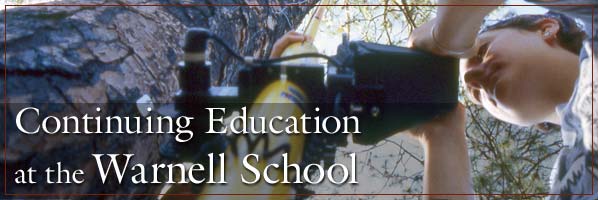Wednesday, September 5, 2012
8:00-8:30 am Registration
8:30-10:00 Session I – Abiotic factors (Coder)
• Understanding key stressors and tree reactions
• Water attributes
• Drought and heat impacts
• Tree water use
10:00-10:30 Coffee Break
10:30-11:30 Session I Cont. – Abiotic Factors (Coder)
• Soil Compaction – the Hidden Killer
11:30-12:30 Session II - Harmful Forest Insects (Gandhi)
Introduction to forest insects and forest health issues in Southern forests
Defoliating and sap-sucking forest insects: identification, damage, and control (Gandhi)
• Major categories of damage caused by defoliating and sap-sucking insects.
• The major groups of defoliating and sap-sucking insects
• Recent case studies of common defoliating and sap-sucking insects and their management: eastern tent caterpillar, fall webworm, cicadas, scale insects
12:30-1:30 Lunch
1:30-3:00 Session II – Harmful forest insects (Gandhi)
Bark beetles, ambrosia beetles, and woodboring forest insects: identification, damage, and control
• Differentiating between damage from bark beetles, ambrosia beetles, and woodboring insects
• Major species of bark beetles, ambrosia beetles, and woodboring forest insects in the southern region
• Recent case studies of common bark beetles, ambrosia beetles, and woodboring insects and their management: southern pine beetle, pine engraver, black turpentine beetle, root collar weevil
3:00-3:30 Coffee Break
3:30-5:00 Session II Cont. – Harmful forest insects (Gandhi)
Old, new, and emerging exotic forest insects: identification, damage, and control
• What are exotic forest insects, and why do we need to pay close attention to them?
•Which are the major old, new, and upcoming exotic forest insects in the southern region?
• Case studies of exotic insects and their management: gypsy moth, hemlock woolly adelgid, European woodwasp, redbay ambrosia beetle, emerald ash borer
Thursday, September 6, 2012
8:00-9:00 Session III – Sudden oak death update (Williams-Woodward)
• Phytophthora ramorum, cause of Sudden Oak Death (SOD) is still a concern and being recovered from streams in suburban areas. Symptom recognition, new hosts, federal regulations, and potential impact of the disease on Eastern forest and the urban/forest interface will be covered.
9:00-10:30 Session IV – Essential Elements of Tree Health (Coder)
• Element use
• Misdiagnosis
• Nitrogen enrichment issues
10:30-11:00 Coffee Break
11:00-12:00 Lightning Impacts and Tree Health (Coder)
• Lighting Strength
• Tree damage
• Protection and treatments
12:00-1:00 Lunch (Last chance to speak with vendors)
1:00-2:30 Foliage diseases of hardwood and evergreen landscape trees (Williams -Woodward)
• What's that spot? Why are needled evergreen trees browning? Find out in this presentation on identification and management of foliage diseases of landscape trees
2:30-2:45 Coffee Break
2:45- 4:30 Wood decay fungi and canker diseases (Williams -Woodward)
• Identification of mushrooms and conks commonly associated with tree trunk and root decay in Georgia
• Identification and management of branch and stem canker diseases, as well as an update on thousand canker disease of black walnut: where it is, what to do about it.
4:30-4:45 Conclusion & Evaluations
4:45 Adjourn



